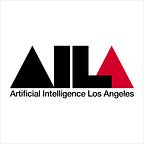AI Earth Summit — Water Security
Fresh water is essential to human survival. Drinking, farming, washing — our entire modern lifestyle revolves around what water can provide for us. Yet many people take for granted the ready availability of fresh water in our modern lives. At a time in which you turn on a faucet and water comes out, it is easy to forget how precious of a commodity it is.
Despite its apparent abundance, fresh water is actually a very rare, insecure, resource. Only 2% of the Earth’s water is fresh. Of that two percent, almost 70% is locked up in the polar ice caps and glaciers. Only about 0.0072% of Earth’s water is actually available for use when all is said and done. The distribution of water on our planet — even as the water planet — is highly misleading and a number of effects threaten to jeopardize this amount further.
As discussed in the first article of the series, climate change is an underlying factor in many of the issues we face today, and water scarcity is no exception. Polar ice melting is one of the most obvious of many climate change effects — the freshwater ice caps melt and flow into the seas, making it unusable. Inland glaciers also feel the effect. While the water from these landlocked glaciers currently acts as the primary supply to rivers and lakes, the rate of melting is unsustainable. Before long, the source will be lost. In sub-tropical areas, climate change may lead to reduced rainfall in areas that are already facing drought; other areas face an increased intensity in flooding. The overall effect of climate change on the water cycle is felt globally, though in different forms. Many areas face shortages already. Combined with a growing populace, the water planet is running out of usable water, creating a threat to our water security.
Looking even within the context of the United States (US), many areas already face water scarcity. In the next decade, 40 out of 50 states in the US face water shortages. These shortages happen when there is not enough fresh water for human use in the surrounding fresh water system — lakes, rivers, reservoirs, and aquifers — for the populace to access. Water is being extracted from these system at a rate that cannot be naturally replenished by rain and snowfall.
To see this problem in action, look no further than California. In 2015, California announced a historic water restriction mandate in an effort to mitigate the effects of a four-year, record-breaking drought. California, like many western states, relies heavily on melting snowpack each year to resupply surface water reserves;however, the lack of winter weather and rise in temperatures caused by climate change has resulted in the lowest amount of snowpack on record. Low snowpack means low water, meaning an estimated 500-thousand to 1-million people have trouble accessing water in California’s central valley. As a result, the state has become reliant on external water sources, namely the Colorado river, for its water supply.
The water shortage in California is made more severe by its $46-billion agricultural industry. The industry uses a whopping 70% of the state’s water supply. Regulating use in this industry is much harder when the state — and the country as a whole — is so reliant on it. Nearly 13% of the nation’s food supply comes from California, and it outnumbers the following states by $20-million in value. The current water shortage that is threatening California’s agricultural sector makes us face one of the biggest environmental questions today: how do we provide for a growing populace while facing a dwindling water supply?
This question is especially hard to answer when we lack accurate models and ways of tracking water usage. California is currently pushing for more accurate tracking of agricultural water usage and there are global initiatives to better model the Earth water cycle to better predict water shortages. While no one person, or even state, is to blame for the water crisis we face, everyone will need to play a role in preserving the amount of drinkable water there is in the future. The breakout sessions at AI — LA Earth Summit aim to inspire creative thought and generate ideas for how best to face this challenging question of water security.
Apply for a scholarship: http://earthsummit.la
Techstars Startup Weekend: https://aila-techstars.eventbrite.com
Chloe Grubb is a senior in Robotics at Olin College of Engineering who has focused her time in user-centered (UX) design. She hopes to bridge the gap between engineering and design to create impactful experiences for users. Over the past four years, she has dedicated these skills to addressing the need for increased environmental awareness. Spearheading a Climate Action semester at her school and piloting a start-up, Drina, to allow users to make environmentally conscious decisions highlights her desire to utilize UX design to engage and excite people in the changes that need to happen for environmental stability. Being a contributor to AI Earth Summit is the next step in her environmental action involvement.
